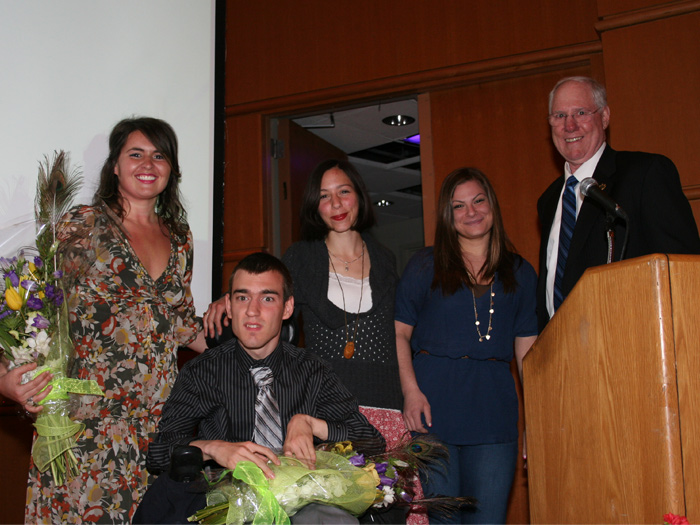When most people think of the five boroughs of New York City (NYC), they think buildings and concrete, not nature and wildlife. CSI Biology grad student, Andrew Bernick is an exception. Bernick is currently researching the foraging patterns of black-crowned night herons in Staten Island and Eastern New Jersey under Biology Professor Richard Veit.
Besides using the findings for his Doctoral Thesis, Bernick hopes to shed more light on the patterns of habitat use and foraging ecology of these birds, which are the most abundant wader species breeding within New York City heron colonies.
Andrew BernickRecently, Bernick was awarded a Graduate Fellowship from the Hudson River Foundation, and he hopes to contribute to the design of a more effective management plan for NYC wader populations.
Bernick did not always intend to study birds, although he did intend to pursue a career in the sciences. After an ornithology class at the University of Rhode Island, Bernick explains he “became hooked and really interested in birds.” Later, while doing field research, Dr. Veit, who was a part of the same project, encouraged him to pursue a graduate degree at CSI.
Black Crowned Night Heron NestlingBernick’s research, which began in March 2002, and will continue until September 2004, will attempt to answer a number of questions about the herons. Bernick will examine the prey capture success of the birds, and their different habitat types and where these are located. In addition, he will assess the time of day that the birds forage throughout their breeding season, the type of prey available in heron-frequented foraging sites, and how the success of birds’ foraging affects their choice of feeding area.
Bernick’s studies will not be a walk in the park. Throughout the two and a half-year period, he will record the birds’ flight line patterns twice a week, visit foraging areas on a daily basis to assess conditions and record the birds’ foraging behavior, monitor the availability of prey species at biweekly intervals, and observe the diet of nestlings by collecting and analyzing their regurgitant.
Bernick captured this heron and its reflection in the water with a night-scope camera attachment.Although his research will prove long, and sometimes difficult, Bernick says that he is glad to have the opportunity to do it with the help of the CSI Biology Department for a number of reasons. First and foremost, he appreciates his colleagues at the College–especially Dr. Veit, who Bernick notes is “really supportive” of his students.
Besides enjoying the fact that he is based in Staten Island where he lives, Bernick also stresses that he “likes the whole package” at CSI, where, through the CUNY Graduate Center, he can take classes on campus and at other institutions like NYU and Columbia. “I like the flexibility here,” he continues, “and it’s also very affordable to study here.”
As for his future plans, Bernick hopes to continue his focus on the black-crowned night heron. However, he will next examine the birds’ persistence patterns–were they came from before they arrived here and where they will go after they leave Staten Island.
















